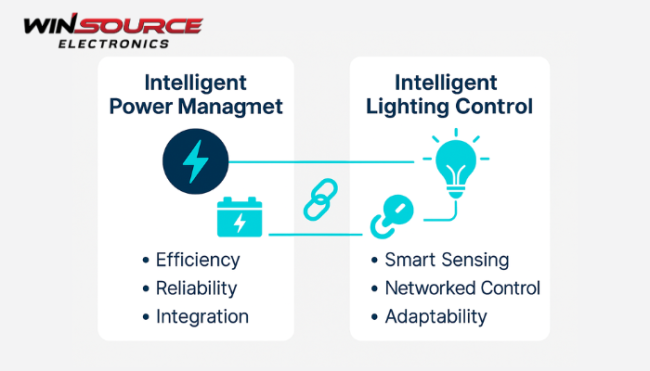
* Question
In terms of LED lighting technology, what are the two major development areas that National Semiconductor expects?
* Answer
According to National Semiconductor’s perspective on LED lighting technology, the company identified two major development areas that would drive the evolution of LED systems:
1. Intelligent Power Management and Driver Technology
National Semiconductor emphasized that the efficiency, stability, and controllability of LED lighting depend heavily on advanced driver and power management solutions.
Key development focuses include:
High-efficiency LED drivers: To maximize luminous output while minimizing power loss.
Accurate current regulation: Since LEDs are current-driven devices, precise current control ensures consistent brightness and prevents thermal runaway.
Dimming and control integration: Support for analog, PWM, and digital dimming interfaces (such as DALI or DMX).
Power factor correction (PFC): To meet international energy standards and reduce harmonic distortion.
System-on-Chip (SoC) integration: Combining control, sensing, and communication in one driver IC to reduce component count and improve reliability.
In essence, National Semiconductor viewed power management IC innovation as the foundation for achieving higher performance, longer life, and smarter LED systems.
2. Intelligent Lighting Control and System Integration
The second development area focuses on the system-level intelligence of LED lighting — making lighting adaptive, connected, and user-responsive.
This involves integrating LED drivers with sensing, communication, and digital control technologies.
Key directions include:
Smart control networks: Integration of LEDs with wired or wireless communication (e.g., ZigBee, Bluetooth, DALI).
Sensor-based adaptive lighting: Using motion, daylight, or temperature sensors to optimize brightness and power usage.
Color management and tuning: Real-time color temperature and intensity adjustment for ambiance and human-centric lighting.
Digital lighting systems: Combining LED control with microcontrollers and digital interfaces for programmable, networked lighting.
National Semiconductor anticipated that intelligent and networked control would transform LEDs from simple light sources into adaptive, energy-optimized systems — central to future smart lighting and IoT environments.
Summary
Development Area | Focus | Goal |
1. Intelligent Power Management / Driver Technology | Efficient, precise, and integrated LED driver ICs | Higher efficiency, reliability, and simplified design |
2. Intelligent Lighting Control / System Integration | Smart sensing, networked control, and digital adaptability | Adaptive, connected, and energy-optimized lighting systems |
In summary:
National Semiconductor expected LED lighting technology to evolve mainly through:
Advanced power and driver management, and
Smart, integrated lighting control systems.
Together, these areas define the transition from basic LED illumination to intelligent, energy-efficient, and networked lighting solutions.

COMMENTS